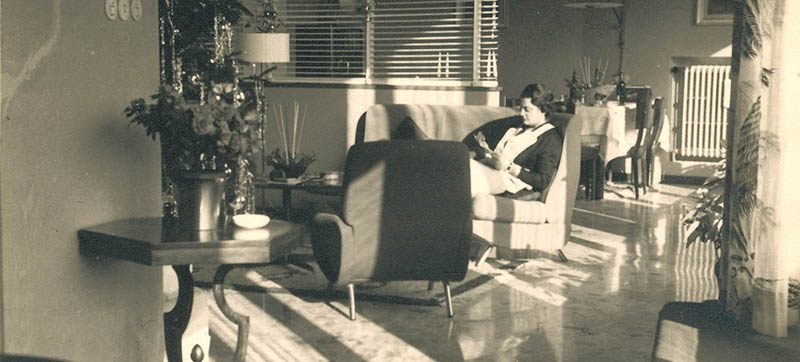«Approval has been given to modify the north-facing facade since it is architecturally wretched in appearance». Such was the bureaucratic language expressed by the building committee of Jesi town council in 1951. Reading this today a smile will come at once to your lips considering that the so-called “wretched project” had been elaborated by none other than Marco Zanuso, who later became established as one of the greatest architects and designers in Italian history. Nevertheless, Jesi was not Turin or Milan and such a linear building – lacking any element whatsoever that might have upset its essential appearance – would have looked too “different” in Jesi compared to contemporary norms of building style, a style that was caught up within the frenetic and often approximate development of cities at that time.
Zanuso did not pay too much attention to the indications received from the building committee and the latter, moreover, did little to put any obstacles in his way by imposing any guidelines. The building was thus constructed and in one little corner of Italy one of the first architectural projects of the Milanese architect was realised – an architect who, until that moment, had mostly concentrated on industrial design. When Zanuso arrived in the Marches – having been invited there by the Reggiani’s – he was in the midst of a period of great creative zeal and had already became exceptionally successful. It was in that same year that he had won the Gran Premio Prize at Milan’s Triennale for his Lady chair, produced by Arflex in Milan. The president of this company was Pio Reggiani, his client’s brother, and this indeed also explains the link between the architect and the property in Jesi on the Adriatic Sea.
Zanuso designed every single little detail of the house, even the interiors, in which everything is fussily tended to and stylistically impeccable with – for the period – highly innovative technical solutions. Zanuso also tended to the furnishings of the building, in agreement with the owners, and integrated large and beguiling spaces with the softer lines of his own creations in furniture and with those technical and stylistic inventions that were also employed by other great Italian designers from the post-war period such as Gino Sarfatti.
When you look back at those black and white photographs from the 1950’s, the idea shines through for a need for absolute change, a real need for innovation. He offered an almost poetic reconsideration of day-to-day life that was to be clothed within new forms and shapes, with lamps on stands like the corolla inside a flower and large reflecting cups that waver in the air like Grace Kelly’s hat in the film To Catch a Thief. Forms of sheer beauty that push through time and still appear today as witnesses of a period in which extraordinary creativity was commonplace. Forms that are the combination of Italian style with Italy’s great manufacturing traditions, it’s technical innovations and the courage of its business community. In just a few little words: Italian design has conquered the world!

Natale 1955 a Jesi con la padrona di casa che legge e la lampada di Sarfatti sullo sfondo

